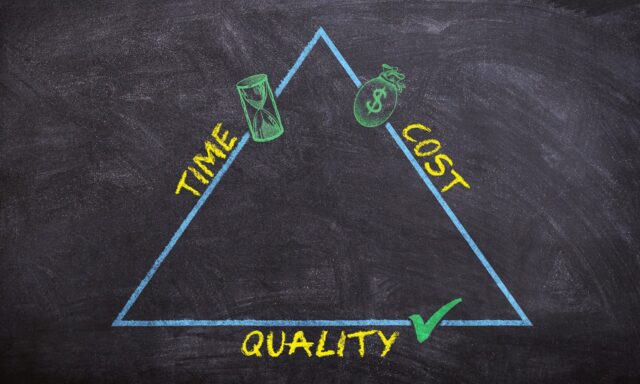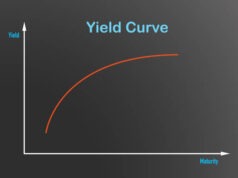
Unlock the power to propel your business forward by harnessing the precision of budgeting software. Imagine streamlining your financial strategies, cutting through the complexity, and uncovering hidden savings — all at your fingertips. This is about taking command of your resources with tools designed for today’s savvy entrepreneur. Ready to dive in? Let’s explore how budgeting software can be your ally in achieving fiscal clarity and strategic growth.
Budget Automation
Budget automation stands as a cornerstone feature of budgeting software, transforming the way businesses manage their financial resources. By using business budgeting software to automate repetitive and time-intensive tasks such as data entry and report generation, these tools reduce the chance of human error, ensuring accuracy and consistency in financial data. The software can automatically reconcile accounts, update budgets with real-time data, and alert you to any discrepancies or unusual spending patterns.

This means financial managers can redirect their efforts from mundane tasks to analyzing trends, optimizing strategies, and making informed decisions that contribute to the company’s growth. Ultimately, budget automation not only maximizes the use of financial resources but also empowers businesses to harness their full potential in a market where every dollar counts.
Forecasting and Planning
Understanding future financial trajectories is essential for any thriving business. Budgeting software excels in forecasting and planning by leveraging historical data and predictive analytics to anticipate future trends and cash flow needs. It allows business leaders to construct various what-if scenarios, aiding in preparation for different financial circumstances. This proactive approach helps to avoid pitfalls and capitalize on potential opportunities.
Additionally, the software supports resource allocation by identifying which areas yield the highest return on investment. This strategic planning ensures that every dollar is spent wisely, reinforcing the company’s long-term objectives. The integration of forecasting within budgeting software means businesses can stay agile and responsive to market changes, making swift adjustments to budgets as necessary. Thus, budgeting software stands as an invaluable tool not just for tracking numbers but for shaping a company’s financial future with precision and foresight.
Expense Tracking
Every company has its own string of expenses it needs to address at all times so it can function properly. These can usually be categorized as the following:
- Fixed expenses
- Variable expenses
- Employee-related expenses
- Supplier and vendor costs
- Operating expenses
- Marketing and advertising
- Travel and Entertainment
- Depreciation and amortization
- Interest and financing costs
- Taxes
Expense tracking with budgeting software meticulously monitors each outgoing dollar, categorizing them into manageable subgroups such as operating or marketing costs. This level of detail provides a clear overview of financial outflows, enabling businesses to identify any excessive expenditures and adjust accordingly.
Moreover, by setting thresholds for certain expense categories, companies can receive real-time alerts to prevent overspending. Access to such granular insights helps ensure that resources are funneled into the most impactful areas, maximizing the return on every investment. With this technology, businesses can maintain strict financial control, ensuring long-term sustainability and growth.
Real-time Reporting
With the capability to deliver up-to-the-minute financial reports, leaders can make swift, informed decisions. This immediate insight into fiscal health enables a dynamic allocation of resources, pivoting strategies to meet market demands without delay. It minimizes the lag between data acquisition and analysis, providing a higher level of financial agility and control. Budgeting software thus ensures that businesses stay ahead of the curve, spotting trends and addressing issues as they occur, rather than when it’s too late.
Further, the integration of dashboards and visual representations of data simplifies complex information, enabling stakeholders to quickly understand and act on key financial metrics. By leveraging real-time reporting, companies can maximize their resources effectively, ensuring that each decision is backed by the most current and comprehensive financial data available.
Collaboration and Communication
Effective collaboration and communication are pivotal in resource management, and this is where budgeting software becomes particularly advantageous. It centralizes financial information, providing a single source of truth that all departments can access and contribute to. This fosters a collaborative environment where teams can work together on budget planning and monitoring, regardless of their physical locations.
With multiple stakeholders often involved in budgeting decisions, the software allows for seamless sharing of reports, the delegation of tasks, and the collective review of financial data. This transparency ensures that everyone is on the same page, reducing the risk of miscommunications that could lead to costly errors or oversights. As a result, budgeting also enhances the collective ability of a company to manage its financial resources more efficiently and with greater coherence.
Scenario Planning
This feature enables the creation of multiple hypothetical financial models based on varying conditions and assumptions. Businesses can simulate the impact of different economic scenarios, market conditions, or strategic changes on their financial health. By analyzing these projections, they can allocate resources to areas with the strongest impact and identify potential risks before they materialize.
This strategic foresight ensures resources are not merely spent, but invested where they can yield the highest return, and where contingency plans are in place to safeguard against unforeseen challenges. Budgeting software becomes an invaluable ally in financial preparedness and resource optimization, empowering businesses with the agility to pivot as future circumstances demand.
Integration with Other Systems
The integration of budgeting software with other business systems such as Enterprise Resource Planning (ERP), Customer Relationship Management (CRM), and Human Resources Management Systems (HRMS) is a quintessential feature that optimizes resource usage. This connectivity enables a seamless flow of data across various departments, creating a cohesive ecosystem where financial performance is constantly informed by up-to-date operational metrics.
By harmonizing these data streams, budgeting software provides a comprehensive picture, ensuring that resource allocation is both strategic and data-driven. Thus, integration minimizes data silos, reduces the time spent on manual data transfer, and amplifies accuracy in financial planning, allowing businesses to maximize their resources efficiently and effectively in alignment with their broader organizational objectives.

As you embrace the capabilities of budgeting software, you’re set on the path to strategic financial management and undeniable growth. Harnessing these advanced tools arms you with foresight, precision, and control. Now, imagine seizing opportunities and navigating challenges with newfound confidence. Your business is not just surviving; it’s thriving. It’s time to take the reins, make every dollar work smarter, and watch as your business reaches its fullest potential. The future is yours to command—let budgeting software light the way.


































